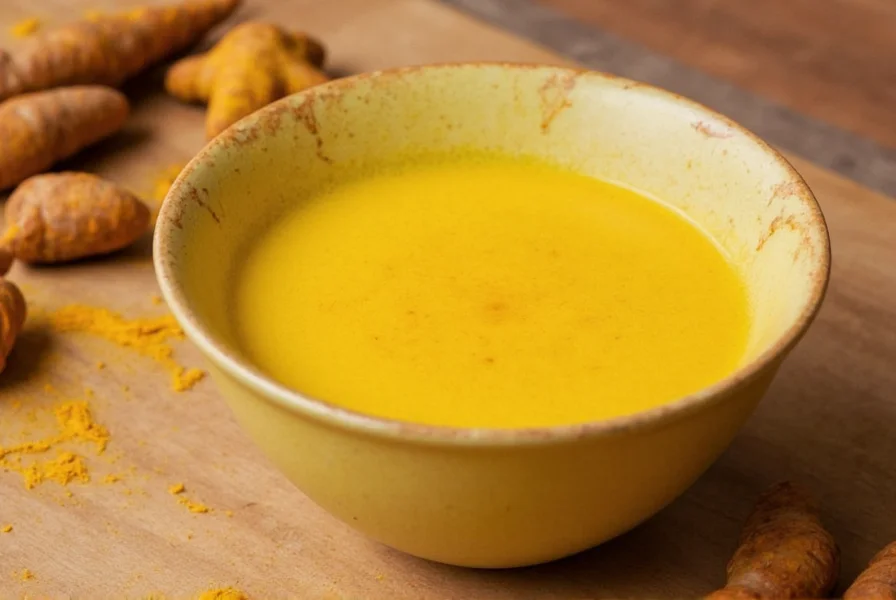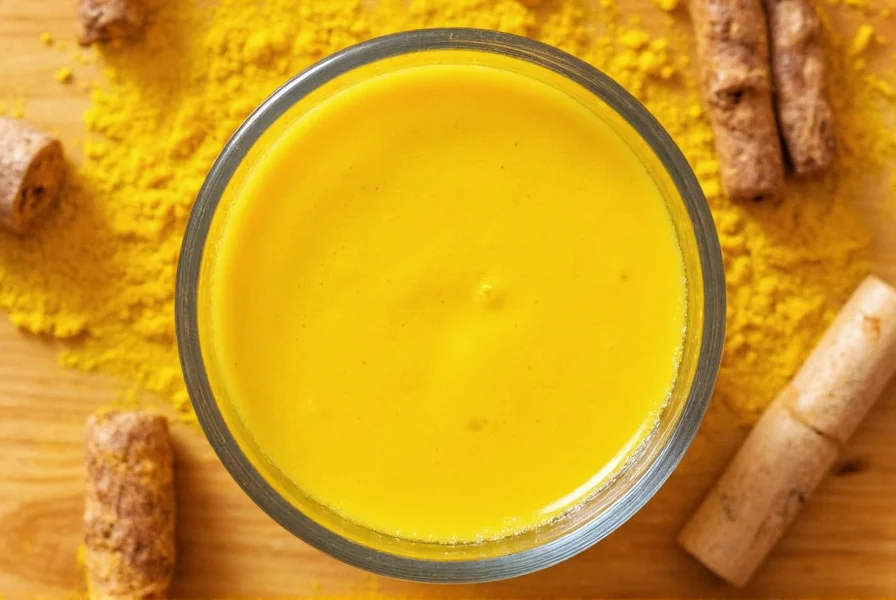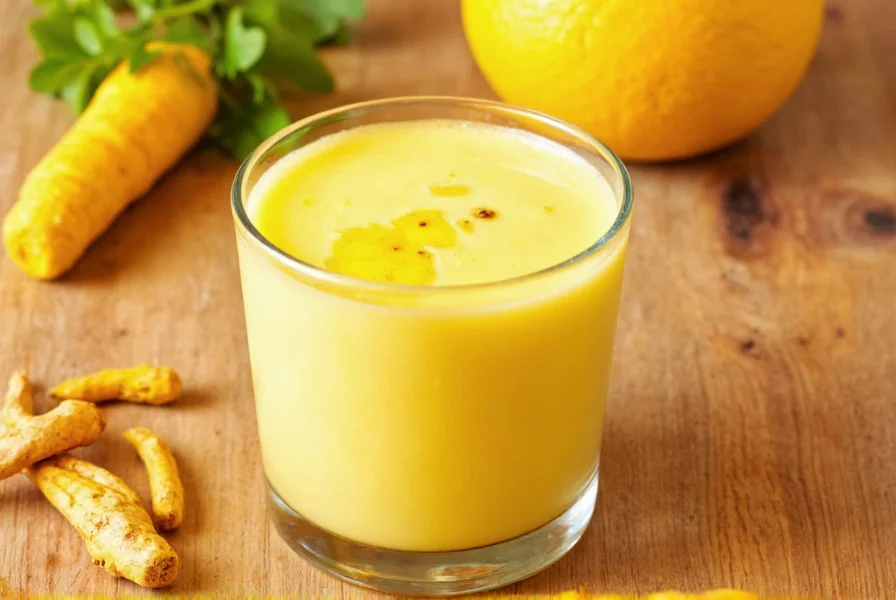Golden milk has gained popularity in Western wellness circles, but its origins trace back thousands of years to Ayurvedic medicine in India. This vibrant yellow beverage combines the earthy spice turmeric with warm milk and supporting ingredients to create a drink that's both comforting and potentially beneficial for overall wellness. Understanding the science behind this traditional remedy helps separate evidence-based benefits from exaggerated claims.
The Science of Turmeric and Bioavailability
Curcumin, the primary active compound in turmeric, has been the subject of extensive research. Studies suggest curcumin possesses anti-inflammatory and antioxidant properties, but its effectiveness depends significantly on bioavailability. Pure curcumin has notoriously poor absorption when consumed alone—only about 1% gets absorbed by the body. This is why traditional preparations of turmeric milk include specific components that enhance absorption:
- Fat content from milk or plant-based alternatives helps dissolve curcumin
- Black pepper (containing piperine) can increase curcumin absorption by up to 2,000%
- Heating the mixture slightly improves solubility
Research published in Advances in Experimental Medicine and Biology indicates that combining curcumin with these enhancers creates a formulation with significantly greater potential benefits than turmeric alone. However, it's crucial to understand that while promising, most studies on curcumin have been conducted in laboratory settings or with concentrated supplements—not with dietary amounts found in turmeric milk.
| Preparation Method | Absorption Rate | Practical Application |
|---|---|---|
| Pure turmeric powder in water | ~1% | Minimal benefit for systemic effects |
| Turmeric with fat source | ~5-7% | Basic golden milk preparation |
| Turmeric with fat + black pepper | ~20-25% | Traditional preparation method |
| Curcumin supplements with enhancers | ~50-60% | Clinical study formulations |
Traditional Preparation and Modern Variations
Creating authentic turmeric milk follows principles that maximize both flavor and potential benefits. The traditional preparation method has stood the test of time for good reason—it incorporates all the elements needed for optimal curcumin utilization.

A basic turmeric milk recipe includes:
- 1 cup milk (dairy or plant-based)
- 1/2 teaspoon turmeric powder (or 1-inch fresh turmeric root)
- 1/4 teaspoon black pepper
- 1/2 teaspoon healthy fat (coconut oil or ghee)
- Optional: cinnamon, ginger, or honey to taste
For those searching for how to make turmeric milk for inflammation, the key is maintaining the critical components that enhance curcumin's bioavailability. Many modern recipes omit black pepper, significantly reducing potential benefits. When preparing golden milk for sleep support, consider adding a small amount of honey and reducing stimulating spices like ginger.
Evidence-Based Health Considerations
While turmeric milk shouldn't replace medical treatment, research suggests potential wellness benefits when consumed regularly as part of a healthy lifestyle:
Anti-Inflammatory Support
A review in the Journal of Medicinal Food noted that curcumin demonstrates anti-inflammatory effects comparable to some pharmaceutical agents, but at much higher concentrations than found in dietary turmeric milk. The beverage may contribute to overall anti-inflammatory dietary patterns rather than providing dramatic standalone effects.
Sleep Quality Enhancement
Many people drink turmeric milk before bed seeking better sleep. While no direct studies confirm turmeric milk improves sleep, the warm milk component contains tryptophan, and the ritual of consuming a warm beverage before bed may support relaxation. Those searching for turmeric milk before bed benefits should understand it's the combination of warmth, ritual, and potential mild anti-inflammatory effects that may support restful sleep.
Immune System Support
Curcumin's antioxidant properties may contribute to overall immune health, but claims that turmeric milk 'boosts immunity' are overstated. A balanced diet containing various colorful plant foods provides more comprehensive immune support than any single beverage.

Safety and Practical Considerations
Turmeric milk is generally safe for most people when consumed in culinary amounts, but certain considerations apply:
- Medication interactions: Turmeric may interact with blood thinners and diabetes medications
- Digestive sensitivity: Large amounts may cause stomach upset in some individuals
- Staining: Turmeric can stain clothing and surfaces—handle with care
- Realistic expectations: This is a wellness beverage, not a medical treatment
For those with specific health conditions, consulting a healthcare provider before making turmeric milk a regular part of your routine is advisable. People searching for turmeric milk for arthritis or other specific conditions should understand that while it may complement other approaches, it's not a replacement for evidence-based medical treatments.
Incorporating Turmeric Milk Into Your Wellness Routine
For optimal results when making turmeric milk at home, consider these evidence-based tips:
- Prepare it fresh rather than making large batches to preserve potency
- Use whole black peppercorns freshly ground for maximum piperine content
- Choose high-quality turmeric with verified curcumin content
- Consume in the evening if using for potential sleep support
- Pair with other anti-inflammatory dietary practices for cumulative benefits
The traditional golden milk recipe works best when viewed as one component of a holistic approach to wellness rather than a standalone solution. Those exploring how to make turmeric milk for inflammation should combine it with other anti-inflammatory lifestyle practices for the best results.
Frequently Asked Questions
How often should I drink turmeric milk for best results?
For general wellness, consuming turmeric milk 3-4 times weekly provides potential benefits without risk of overconsumption. Daily consumption is generally safe for most people, but cycling usage (such as 5 days on, 2 days off) may prevent potential tolerance buildup. Those using turmeric milk before bed for sleep support might benefit from consistent evening consumption, while those focusing on inflammation may find alternating days more effective.
Can I make turmeric milk without dairy for better absorption?
Yes, plant-based milks work well for turmeric milk. Full-fat coconut milk provides excellent fat content for curcumin absorption, while almond or oat milk benefit from added healthy fats like coconut oil or ghee. Research shows that the fat content matters more than whether the milk is dairy or plant-based. For optimal results with non-dairy turmeric milk for inflammation, include 1/2 teaspoon of healthy fat and freshly ground black pepper in your preparation.
How long does it take to notice benefits from drinking turmeric milk?
Most people don't experience immediate effects from turmeric milk. Any potential benefits typically emerge after consistent consumption for 4-8 weeks. Those using golden milk for sleep support may notice subtle improvements in sleep quality within 2-3 weeks, while anti-inflammatory effects generally require longer, consistent use. It's important to maintain realistic expectations—turmeric milk provides modest support rather than dramatic results.
Is store-bought turmeric milk as effective as homemade?
Most commercial turmeric milk products contain insufficient curcumin and lack the critical black pepper component needed for absorption. Ready-made versions often use turmeric extract without proper bioavailability enhancers. For those seeking turmeric milk for arthritis or other specific concerns, homemade versions with fresh ingredients, black pepper, and healthy fats provide significantly greater potential benefits than most store-bought alternatives.
Can turmeric milk interact with medications?
Yes, turmeric may interact with blood thinners (like warfarin), diabetes medications, and certain chemotherapy drugs. The curcumin in turmeric has mild blood-thinning properties and can affect blood sugar levels. If you take medications for these conditions or have upcoming surgery, consult your healthcare provider before making turmeric milk a regular part of your routine. Those using turmeric milk for inflammation while on prescription medications should especially exercise caution.











 浙公网安备
33010002000092号
浙公网安备
33010002000092号 浙B2-20120091-4
浙B2-20120091-4